At the outset of the Second Sino-Japanese War in 1937, the Japanese Navy’s Air Service assumed a leading role in the strategic bombardment of China with their modern force of attack planes. As the battle quickly advanced into the interior of the continent, the Navy developed a new requirement to maintain force projection: the need for a land-based, high-speed reconnaissance plane to conduct recon missions far into China while being untouchable by enemy fighters.

As it turned out, this was a requirement the Navy could not fulfill by its own developments until the end.
First, the ’13-Shi High-Speed Land-based Recon Plane’ requirement was issued by the Navy in 1938, calling for a recon plane faster than current fighters. Aichi Watch & Electric Co developed this plane, given the code name ‘C4A1’, and the mockup was completed in March 1939. However, it was decided instead to simply adopt the Army’s existing Type 97 HQ Recon Plane (Ki-15) as the Navy’s Type 98 Land-based Recon Plane (C5M) in November 1939.
At the outbreak of the Pacific War in December 1941, the Navy was now challenged by Allied fighters with superior speeds to Chinese types. By this time, the Army had developed the Type 100 HQ Recon Plane (Ki-46), a plane with an unprecedented high speed of over 600 km/h. The Navy borrowed some of these planes from the Army in 1942, supplementing the deployment of their own land-based recon conversion, J1N1-C, which had a similar range but a speed of only 507 km/h.

This arrangement was still far from satisfactory, and the Navy had not abandoned the plans for their own land-based recon plane. Starting at the Navy’s own Air Technical Arsenal (Kūgishō) from the beginning of the Pacific War, the resulting developments would seek to challenge the limits of aircraft performance at the time, and when the fortunes of war shifted out of favour, it was revived as one of the earliest Japanese jet aircraft proposals.
The Predecessor: Y30, R1Y1, ‘Gyōun’
In the year 1939, the Navy’s Kūgishō was developing three novel aircraft plans to set performance records. These were the ‘Y10’ (for speed record), ‘Y20’ (for range record), and ‘Y30’ (for altitude record). But because of the need to devote the Kūgishō’s capabilities to practical service aircraft, in the following year, the Y10 was canceled, the Y20 was redeveloped into the famous high-speed, long-range bomber P1Y, ‘Ginga’ (Galaxy), and the remaining Y30 is the subject at hand.
It was decided to redevelop the Y30 plan as a land-based recon plane, and the Navy Aviation HQ ordered the ’17-Shi Land-based Recon Plane’ requirement to the Kūgishō. The requirements were a top speed of 360 knots (667 km/h) at 6,000 meters to outrun any enemy fighter planes, and a range of 4,000 nautical miles (7,410 km) at 4,000 meters to perform long-range recon missions. Additionally, the ability to implement a pressurized cabin in the future was necessary. This plane became known as R1Y1, Experimental Gyōun (Dawn Cloud), and basic planning started in December 1941 under Technical Lieutenant-commander Yukio Ōtsuki.
(US intel also picked up the name R1Y1, ‘Seiun’ (Blue Cloud), as well as ‘Gyōun’, so the naming situation is uncertain.)
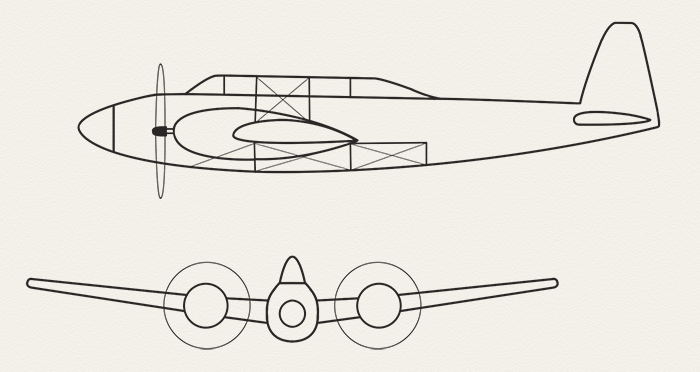
Initially, the plane was to be powered by a single Mitsubishi ‘Nu-Gō Twin’ in the nose, consisting of two Nu-Gō (ME2A) 24-cylinder liquid-cooled H engines coupled together to produce 5,000 takeoff horsepower. But due to technical issues relating to the huge size of the engine and the fact that it would take a long time to develop, this proposal was abandoned.
Instead, the plane was designed as a twin-engine type equipped with a Mitsubishi MK10A in each nacelle, an 18-cylinder two-row air-cooled radial with a two-stage supercharger (1st stage: twin continuously variable-speed Vulkan-coupling superchargers, 2nd stage: 1-speed mechanical supercharger) producing 2,400 takeoff horsepower.
To facilitate production the structure of R1Y1 was made to be very similar to the Y20 (P1Y, Ginga), even using the same jigs, main spar caps, and longerons. The area that was the bomb bay of the P1Y was instead used to contain fuel tanks, and the upper surface of the main wings also featured semi-integral fuel tanks (where part of the wing structure is used as a fuel tank).
The concrete design of this plane had begun in the summer of 1942, but a snag occurred concerning the engine. It was realized that the MK10A with its advanced Vulkan-coupling superchargers would not be ready in time for the production of the airframe, so it was necessary to abandon the Vulkan-coupling supercharger and use the ‘MK10C’ engine which featured a turbocharger feeding into a two-speed mechanical supercharger.

Photo: NASM
With the turbocharged MK10C, the top speed at 6,000 meters was calculated to only be 350 knots (648 km/h), 10 knots below the speed requirement. Even though the turbocharger allowed improved performance at higher altitudes, such as 370 knots (685 km/h) at 8,000 meters, the Navy’s tacticians firmly held the 360 knots (667 km/h) at 6,000 m speed requirement until the end.
While the plan was stalled due to the performance shortage, the momentum of the war had changed to a situation that no longer demanded such extreme reconnaissance range. Another plan being simultaneously developed in the Kūgishō, ‘Y40‘ was predicted to reach a top speed of 400 knots (741 km/h) (despite only having half the range), and quickly caught the attention of Navy officials who desired extravagant performance. As a result, even though it was far closer to realization, the development of R1Y1 was suspended in the summer of 1943. The design was 85% complete, and the factory work was 20% complete.
| Gyōun Planned Specifications | |||||
|---|---|---|---|---|---|
| Name | Internal | Y30 | Engine (x2) | Name | MK10C Ha-42-21 |
| Code | R1Y1 | ||||
| Prototype | Experimental Gyōun | Output (TO) | 2,500 hp @ 2,800 rpm | ||
| Dimensions | Length | 15.0 m | Performance | Top Speed | 648 km/h @ 6,000 m 685 km/h @ 8,000 m |
| Span | 19.0 m | ||||
| Wing Area | 50.0 m2 | Range | 7,408 km @ 4,000 m | ||
| Weights | Empty | 10,500 kg | Armament | Type 2 13 mm Flexible MG (400 r/g) x1 | |
| Loaded | 14,000 kg | Crew | 3 (pilot, recon, radio) | ||
He 119 and Y40
The Y40 plan originated with the Japanese testing of the He 119, a novel record-breaking aircraft that was developed by Germany’s Heinkel Aircraft Works in the later 1930s, and purchased by the Japanese Navy.
The He 119 was developed as a high-speed reconnaissance plane, and in order to achieve exceptional speeds, many of the latest aeronautical innovations were implemented into the design. The low-drag airframe lacked a canopy, rather featuring a glazed nose, and due to the evaporative cooling system, originally exhibited drag-less cooling without an external radiator intake (but due to cooling deficiencies, a radiator scoop was added).
The engine was located in the middle of the fuselage in order to streamline the shape and consisted of two ‘DB601A’ 12-cylinder inverted-V engines (takeoff power 1,175 hp each) coupled together in parallel, an arrangement designated ‘DB606’ (takeoff power 2,350 hp). This engine drove an extended shaft that skewered through the cockpit to the four-bladed constant-speed propeller on the nose.

You can see the prop shaft inside the cockpit.
While the He 119 was not a record-setter in terms of maximum airspeed (the top speed was about 590 km/h), one example set the average speed over 1,000 km distance record of 505 km/h in 1937.
After Heinkel’s development was completed, the Japanese Navy purchased two examples of the He 119 in 1940. The planes arrived by an Italian warship, disassembled, in May 1941. They were assembled at the Kūgishō and immediately prepared for test flights at Kasumigaura Airfield with Heinkel test pilot Captain Gerhard Nitschke.
The purpose of the Navy’s testing and examination of the He 119s was to obtain reference material for the development of their own high-speed practical aircraft. The flight testing was scheduled to begin on July 7th and to last until the end of that month. To obtain additional development data, various airframe tests such as strength, vibration, and wind tunnel testing were also planned.
However, the first plane was damaged during a ground run while piloted by Captain Nitschke, and the second plane was later damaged in a landing accident, so the flight testing was not completed. As a result, only the structural tests were conducted to completion.

Based on the data obtained, the high-speed aircraft plan ‘Y40’ was preliminarily started by Technical Lieutenant-commander Masao Yamana at the Kūgishō’s Airframe Department in 1941.
The main interest of the Navy regarding the He 119 seemed to have been in the mid-fuselage parallel-coupled DB 606 engine and the characteristics of the extended propeller shaft. By reference, the Y40 was to implement a very similar power plant installation in pursuit of extreme speed, based on the Navy’s domestic production model of the DB 601 – the ‘Atsuta’ engine produced by the Aichi Aircraft Company.
Y40, R2Y1, ‘Keiun’: Aiming for 400 Knots
With the suspension of the Y30 project, the preliminary Y40 plan was officialized by the Navy Aviation HQ with the issuance of the ’18-Shi Land-based Recon Plane’ specification in the summer of 1943. The parameters were to achieve a speed of 400 knots (741 km/h) at 10,000 meters, faster than any aircraft in service at the time, with a range of 2,000 nautical miles. Technical Lieutenant-commander Ōtsuki, who was the chief designer of the R1Y1, was again placed in charge of this design. The Navy code name ‘R2Y1‘ was assigned, with the prototype designation ‘Experimental Keiun‘ (roughly: Scenic Cloud).
The initial prototype construction plan was to complete one aircraft each in June, July, and August of 1944, followed by two in September, and another in October.

The engine installation involved up-rating an Atsuta Model 30-series (later-series of domestic DB 601) from 1,400 up to 1,700 takeoff horsepower by increasing the manifold pressure, compression ratio, rotational speed, and installing a turbocharger. This variant was named ‘AE1T‘, and shared the same 150 mm bore by 160 mm stroke as the Atsuta, but with a compression ratio of 7.5 along with a maximum manifold boost of +520 mmHg and maximum RPM of 3,000.
It should be emphasized how incredible this engine configuration was. The Navy’s original ‘Atsuta Model 21’ was roughly equivalent to an early DB601, and produced about 1,200 takeoff horsepower. In essence, this original engine was iteratively modified to finally produce 1,700 horsepower, exceeding the power of the German base model ‘DB 605A’ (1,475 hp) and approaching the power of the water-methanol injected DB605DB (1,800hp) or base DB 603A (1,750 hp), both of which had larger cylinders than the DB 601/Atsuta. The practical application of such a boosted engine is immediately questionable.
Furthermore, in my research, I could not ascertain whether the AE1T engine implemented water-methanol injection to reduce the tendency of ‘knocking’ (premature combustion). Without this, the Keiun was likely to need at least 100 octane fuel to operate, which was in extremely low supply by the end of the war. Even the comparatively low-boost Atsuta Model 31 (AE1P) required 95 octane fuel to run in take-off condition, so the AE1T would be quite demanding.
Two AE1T were coupled together into the single unit designated the ‘AE1T Twin‘ or by unified Army-Navy convention, the ‘Ha-70-01‘. Together, this was a 24-cylinder inverted-W arrangement with 3,400 takeoff horsepower. Engine cooling was provided with a retractable, split ventral scoop to the radiators, the oil cooler intakes were positioned in each wing root, and the turbocharger and intercooler air was routed through a large intake at the top of the fuselage forming a distinctive ‘hump’. The Ha-70 engine drove a 4-meter propeller shaft on a 0.4 reduction ratio to turn the Keiun’s large 3.8 meter, 6-bladed constant-speed VDM propeller at the nose.
As for the airframe of the Keiun, the all-metal structures of the fuselage and wings were designed simply in consideration of production. The lowly-mounted wings consisted of a laminar flow airfoil with a moderate aspect ratio. They had a two-spar structure that was thickly skinned, containing integral fuel tanks. The vertical tail was angled 2 degrees to the right to counteract the torque of the propeller. Keiun sat atop tricycle landing gear, which was rare in Japanese propeller aircraft of the time. This landing gear setup was developed in reference to the analysis of the captured US Douglas A-20 Havoc attack plane.
The teardrop-shaped canopy was to be pressurized for high-altitude operations and housed the pilot and a radio/reconnaissance member, who operated a camera aiming through the underside of the fuselage. As a pure-reconnaissance plane, the R2Y1 was not equipped with ordnance of any type, which would create additional drag and weight.
The development of the R2Y1 proceeded under delays relating to the complexity of the power plant setup, which drew criticism from those who doubted its practicality.
| Keiun Planned Specifications | |||||
|---|---|---|---|---|---|
| Name | Internal | Y40 | Engine | Name | Ha-70-01 (AE1T Twin) |
| Code | R2Y1 | ||||
| Prototype | Experimental Keiun | Output (TO) | 3,400 hp @ 3,000 rpm | ||
| Dimensions | Length | 13.050 m | Output (Nom.) | 3,000 hp @ 8,000 m | |
| Span | 14.000 m | Performance | Top Speed | 741 km/h @ 10,000 m | |
| Height | 4.240 m | Climb | 21’0″ to 10,000 m | ||
| Wing Area | 34.0 m2 | Range | 3,611 km | ||
| Weights | Empty | 6,015 kg | Ceiling | 11,700 m | |
| Loaded | 8,100 kg | Armament | none | ||
| Overload | 9,400 kg | Crew | 2 (pilot, recon) | ||
| Wing Loading | 238.2 kg/m2 | ||||
‘Keiun’ Reborn as a Jet Aircraft
In late June 1944, the Japanese Navy suffered a crippling defeat at the Battle of the Philippine Sea, often referred to as the ‘Great Marianas Turkey Shoot’. The main force of carrier aviation in the Navy, the 1st Mobile Fleet, was annihilated by Task Force 58 after failing to cooperate effectively with land-based forces. Hundreds of aircraft and three aircraft carriers were lost.

Under a situation of such devastating defeats, the Navy Aviation HQ reorganized the development of all aircraft types. Only the designs most essential to the war effort were to be prioritized for the limited allowance of resources remaining. The true value of an advanced, ultra-high-speed recon plane like the Keiun was now heavily in doubt, and the Navy planned to cancel the development of this plane entirely in July 1944.
The saving grace for this plane was the allure of the ‘turbine rocket’ – what is today known globally as the turbojet.
Around this time, the Navy had become enthusiastic about the development of the turbojet engine after hearing reports of its practical use and effectiveness in Germany. Compared to the piston engine, the basic turbojet at that time was simpler, cheaper, and faster to produce, while offering far superior efficiency at high speeds and not requiring high-grade fuel. All of these factors were very ideal for the situation of late-war Japan, where resources, skilled labor, and the performance of aircraft were steadily declining.

Commander Tanegashima’s group at the Kūgishō had been developing a turbojet by their own efforts since 1942, and had finally received major interest from the Navy at this time. The Navy ordered the mass-prototyping of 70 ‘TR10’ model engines. The TR10 was a small centrifugal turbojet with a thrust of only about 300 kgf, but an upscaled model named ‘TR30’ was planned to produce 850 kgf. The TR30 was somewhat similar in scope to the British Rolls-Royce Derwent that originally powered the Gloster Meteor, although the TR30 would never run at maximum power due to being technically underdeveloped.
Turbojet engines had a higher specific fuel consumption than piston engines, and the nearly three times higher thrust output of the TR30 only exacerbated this. Any aircraft equipped with such an engine would need a large internal fuel volume in order to have acceptable endurance, and the R2Y1’s thick fuselage for housing the coupled Ha-70 engine was clearly suited to such an application.
In order to salvage their hard work, the design team of the Keiun proposed to the Navy Aviation HQ the aircraft’s conversion to an attack plane powered by two TR30 units. This proposal was immediately accepted by the Navy staff, now eager to apply jet technology, and was tentatively designated R2Y2, Experimental Keiun Kai. To gather aerodynamic data for the development of the R2Y2, the design team suggested the completion of the R2Y1 prototype as a research plane, which too was easily approved.
Thus, under the aim of ultimately becoming a high-speed jet-propelled attack plane, the Keiun was saved.

In the autumn of 1944, more promising axial-flow turbojets based on the format of the German ‘BMW 003A’ were put into development for high-performance aircraft. The largest and most powerful was Mitsubishi’s Ne-330, which was expected to produce up to 1,320 kg of thrust. This would provide significantly higher performance to the Keiun Kai, and although it was also expected to be the most fuel-hungry Japanese turbojet at full throttle, it was adopted as the design engine. Overall, the huge Keiun was probably the most suitable airframe for this engine among the models in development.
| Keiun Kai Planned Specifications | |||||
|---|---|---|---|---|---|
| Name | Internal | Y40 | Engine (x2) | Name | Ne-330 |
| Code | R2Y2 | Output (Static) | 1,320 kgf @ 7,600 rpm | ||
| Prototype | Experimental Keiun Kai | Output (Nom.) | 990 kgf @ 740 km/h, 7,600 rpm (2,680 hp) | ||
| Dimensions | Length | 13.050 m | Performance | Top Speed | 783 km/h @ 6,000 m 741 km/h @ 10,000 m |
| Span | 14.000 m | ||||
| Height | 4.240 m | Climb | 7’0″ to 6,000 m | ||
| Wing Area | 34.0 m2 | Range | 1,269 km | ||
| Weights | Empty | 5,700 kg | Ceiling | 10,500 m | |
| Loaded | 8,850 kg | Armament | none, later up to 1 ton of weapons | ||
| Overload | 9,950 kg | Crew | 2 (pilot, recon) | ||
| Wing Loading | 260.3 kg/m2 | ||||
To the Test Flight of ‘Keiun’
In February 1945, the design responsibility of the Keiun project was taken over from Commander Ōtsuki by Lieutenant-commander Ichi Aburai (presumed, as an official reading can’t be found), who headed it from that point until the end of the war. According to one member of the team, this did not bode well for the continuation of the project.
The first prototype of the R2Y1 was hurriedly completed as a research plane for the R2Y2 in April 1945. To increase the speed of construction, the turbocharger had not been installed, giving the engine a less impressive power curve at altitude. The aircraft was also not outfitted with the planned pressurized canopy system. These things were not terribly important, given that the use of the Keiun as a high-altitude reconnaissance plane had been abandoned.
Ground testing started on April 27th when the plane was unloaded at Yokosuka Airfield. Test pilot Susumu Takaoka, who would later perform Japan’s first turbojet aircraft flight in the Kikka Kai, was at the controls of the Keiun for this early period. Starting with a slow taxi, by the afternoon faster ground runs were being conducted, and a violent shimmy in the nose wheel was observed. The dampener for the nose gear was quickly replaced and retested, before the plane was loaded onto a transport ship on April 30th and sent to Kisarazu Airbase.
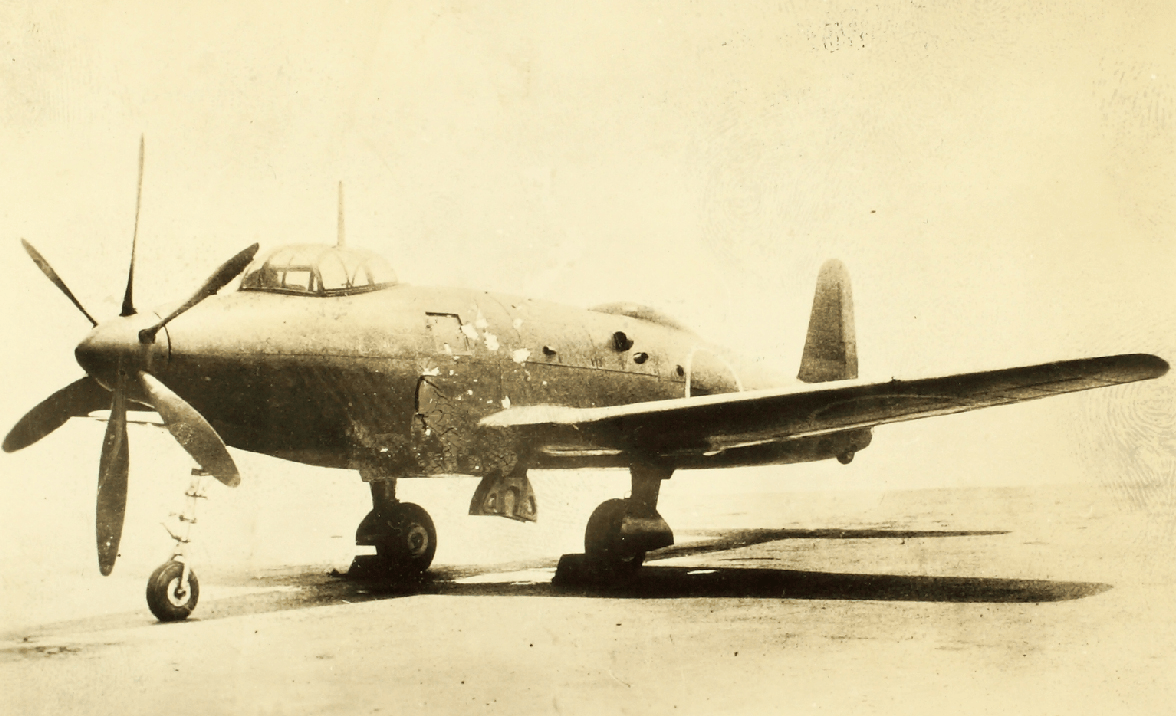
The test was resumed at Kisarazu the same day, with Lieutenant-commander Kitajima in the cockpit. By May 8th a high-speed ground run was attempted again, and the nose wheel shimmy re-appeared, along with a crack in the fork of the main gear leg. Furthermore, during this test, the temperature of the engine rose abnormally around two of the inner exhaust pipes.
The crack in the fork was subsequently repaired, and in an attempt to temporarily ease the cooling problem, holes were drilled in the side of the fuselage for additional intake and exhaust pipes to be installed. This reduced the sleek outward appearance of the fuselage.
Due perhaps in part to the reference data obtained from the vibration testing of the Douglas A-20’s nose and landing gear, the Keiun had little oil leakage in operation, which was remarkable for a Japanese aircraft at the time.
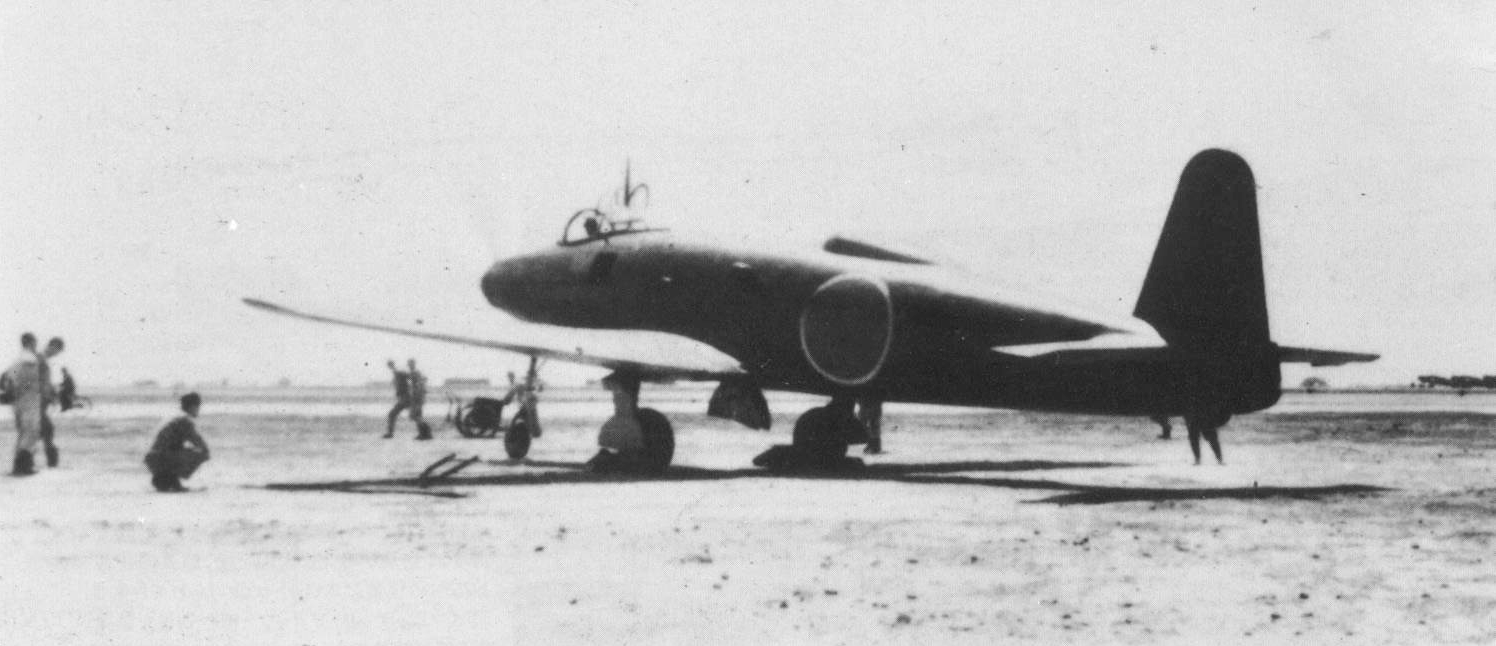
After all of the preceding tests were finally cleared, Lieutenant-commander Kitajima performed a short 4-second “hop” in the Keiun on May 22nd. This was successful, and no bad behaviors were detected in the landing gear or the temperature of the engine at this time.
May 23rd was scheduled to be the first flight test of the Keiun. However, as the aircraft was being prepared for takeoff, a Ryūsei attack plane that was taking off prior suffered a landing gear failure, caught fire, and exploded on the runway. Despite this catastrophic event, the test flight of the R2Y1 proceeded on the same day.

After a 400-meter run, Kitajima brought the Keiun into the air and entered a climb. The aircraft left a trail of black smoke that was characteristically unique to the Ha-70 engine. At about 1,000 meters, Kitajima leveled the plane out with a speed of 180 knots (330 km/h). Suddenly, he noticed an abnormal rise in the engine oil temperature gauge, and immediately powered the engine off, diving back towards the airfield.
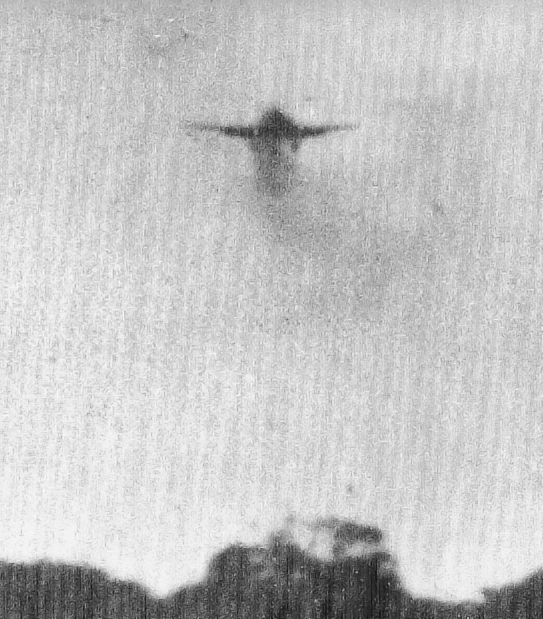

Kitajima successfully landed the aircraft and taxied over to the ground crew with the engine shut off. A fire was spotted at the rear of the engine, which was luckily extinguished quickly before any considerable damage was done to the engine or airframe. Apart from the major cooling issues, the stability and handling of the airframe in flight was said to have no observed problems by Kitajima.
The End of ‘Keiun’
The cause of the aerial fire was ascertained to have been overheating at a bent section of the inner exhaust pipe. In an attempt to remedy this, another larger intake scoop was added to the fuselage. Ground testing continued in a trial to solve the cooling issues completely, but a total solution was not reached by the time of mid-June. It was then that an error from the ground crew caused the engine to disastrously overheat, rendering it completely unusable and in need of replacement.
It would take weeks for a new Ha-70-01 engine to arrive (likely due to bombing damage at the Aichi Atsuta prototype sector) and while waiting for the replacement, a US Mobile Task Force raid in late July destroyed the sole R2Y1 on the ground with a direct bomb hit, scattering the sole flying airframe to pieces.
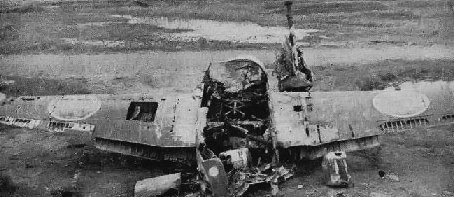

The assembly progress of the remaining prototypes at the Kūgishō had been paralyzed by raids, so there was no prospect of completing another example before the end of the war was reached on August 15th.
At the end of the war, two unfinished Keiun airframes were inventoried at the Kūgishō. The US noted these in their survey of aircraft to ship to the USA, but neither were sent, likely due to being too far from completion. All examples of the Keiun were scrapped following the end of hostilities.
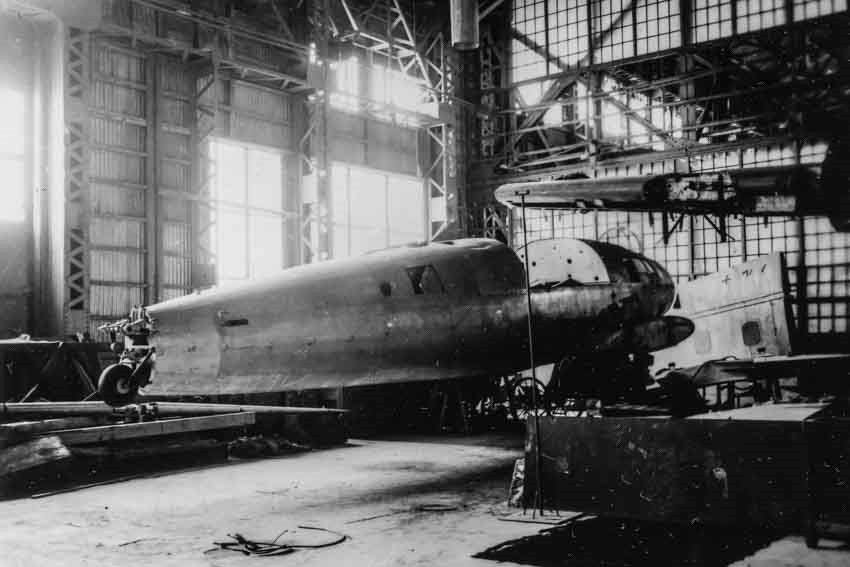
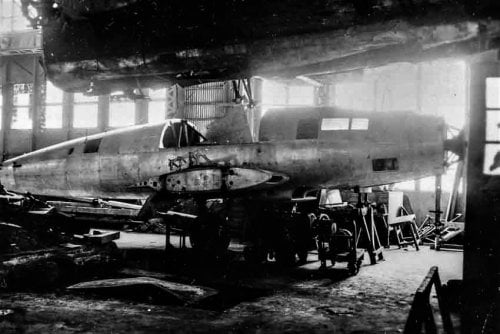

After the war, Lieutenant Takogo Toyoda from the Kūgishō was interrogated for the US Strategic Bombing Survey. Among other subjects, he was questioned about the ‘Keiun’.
You helped design the KEIUN (“Beautiful Cloud”). Describe it to us.
“Commander OTSUKI was the chief designer and I helped him. KEIUN was a twin seater, single-engine experimental scouting and reconnaissance plane produced in late 1944 by YOKOSUKA First Air Technical Arsenal. It had an AICHI KEN No 1 engine (AE1T) behind the pilot. The one experimental model was manufactured in late 1944 and test flown in January 1945, but was never flown in combat. The tempo of war was too fast to warrant production of the plane for combat use. […]”
When was your plane test flown?
“January 1945” [erroneous]
How did the plane perform on the test flight?
“Satisfactorily, but the engine caught on fire. A safe landing was made, however. Only this one Plane (KEIUN) was ever built.”
Rep. Organization and Operation of First Naval Air Technical Arsenal, 1945.
What Became of R2Y2, ‘Keiun Kai’?
The existence of the R2Y2, Experimental Keiun Kai project is something that has always been controversial, and is often even considered dubious as of late. This is especially due to representations showing various different methods of engine placement; most notably its depiction in the video game War Thunder.
As explained earlier, the R2Y2 was not only a real project, but actually planned as the definitive version of the Keiun since the summer of 1944. At least, this was the case in the papers of the Navy. There is almost no extant documentation concerning this plane, but the clearest possible picture will be painted using what survived.
According to the Navy’s data on prototype planes compiled at the end of the war, the design of the R2Y2 only started in February 1945, which coincides with the time that the main designer of the Keiun switched from Commander Ōtsuki to Lieutenant-commander Yui. The specifications provided (already detailed above) give an airframe of the exact same outer dimensions as the original R2Y1, suggesting that the plane was more of a conversion than a major redesign.
Immediately after the war, Ōtsuki was interviewed by the ATIG. He explained that the R2Y2 plan was equipped with twin Ne-330 turbojets mounted in the wings, and that the design had not advanced much because of the lack of progress on the Ne-330 engine. Later, Ōtsuki wrote a memo on the development of the Keiun including a simple sketch showing the general arrangement of the R2Y2. Emphasis was placed on the location of a large fuel tank in the central fuselage, where the Ha-70 had once been.

Another member of the Kūgishō, Ichiro Naito, also recounted about 13 years after the end of the war that the R2Y2 was proposed with under-wing mounted engines and a large fuel tank in the fuselage. He also wrote that 1,000 kg was reserved for ordnance, which is useful to note considering that the actual R2Y2 specifications recorded from the wartime seemingly had not yet considered any armament. Accordingly, the name was still just ‘R2Y2’ at the time, while a concrete change to an attack plane would probably have necessitated the code name ‘R2Y2-G’.
The slowness of the Ne-330 turbojet’s development is a good explanation for the lack of clarity on the R2Y2. The development of the Ne-330 started in the autumn of 1944 at Mitsubishi Nagoya, but when the first unit was rapidly completed in April 1945, it was almost immediately destroyed by a bombing raid on the 7th of the same month which devastated the plant. After that, work was dispersed to Meidō Industrial School in Matsumoto, before being again shifted to the Niigata Ironworks in Niigata in June, causing further delays. In early August, members of the design group were moved back to Matsumoto to work on the higher-priority KR10 rocket engine for the J8M1 interceptor, and at the end of the war, the second and succeeding units were still under construction at Niigata. The engine was not even remotely near to the stage of service, so the prospects of completing the R2Y2 itself were very slim even by the end of the war.
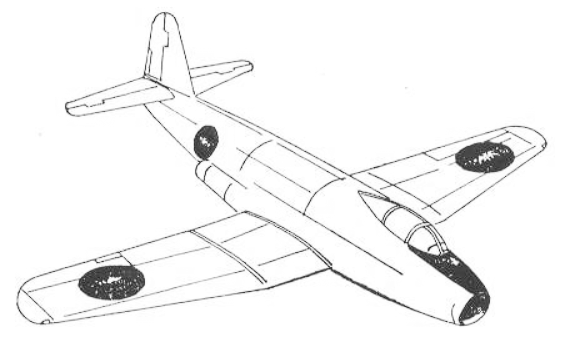
with a nose air intake.
Many depictions of the R2Y2 that appeared long after the war in books and magazines show alternate ‘plans’ with the turbojet engines mounted inside the fuselage and fed through intakes in either the nose or the wing roots. The actual veracity of these plans cannot be confirmed by historical materials: they are at best brief concepts, at worst, fictional.
Both of the turbojets planned for the Keiun Kai at different times, the Ne-30 and Ne-330, had rather high rates of fuel consumption, even compared to other Japanese turbojets. To obtain a satisfactory operational range, the implementation of a large fuel tank in the central fuselage was resultingly necessary. Such a fuel tank would have to be diminished or even removed if shoulder or nose-mounted air intakes were used.
Mounting the engines inside the fuselage would have increased the complexity of maintenance, the quality of which was falling near the end of the war, and would also likely increase production time. Furthermore, it would have required research into channel losses caused by feeding a jet engine with a long air intake.
In consideration of the technical problems and the state of the war, along with extant documented materials, it seems certain that the simple “underwing nacelle format” was the final appearance of the Keiun Kai, and probably the sole format ever seriously considered.
Conclusion
The Keiun leaves a strong impression as one of the most unique in appearance and technically impressive Japanese aircraft of the Second World War. The monstrous 3,400 horsepower coupled engine and sleek aerodynamics sought to deliver an unprecedented performance of 741 kilometers per hour, exceeding even the highest performance of piston-engined service aircraft around the world at the time.
However, the real-world practicality of the design is easy to question.
The preceding variants of the liquid-cooled Atsuta engine already suffered from operational maintenance and production issues in its use with the D4Y ‘Suisei’ bomber. Majorly up-rating and coupling two of these engines together would only have exacerbated these problems. In the complete version of the Keiun, the engine was supposed to be fitted with a turbocharger, which was a technology not mastered by the Japanese until the end of the war.
In hindsight, it is known that the development period of the R2Y1 eclipsed its potential usefulness on the battlefield due to the deterioration of the war. It may have been best to have continued the development of its predecessor, the R1Y1, instead. Though this plane was expected to miss its performance requirement by a small margin, it had more than a year of concrete development in advance.
Even when re-proposed as a turbojet attack plane, the completion of the project never came close to realization. From a practical point of view, the decision to continue developing the Keiun until the end of the war was only another resource drain in a situation that was already hopeless by any possible means.
Sources
- Sekai no Kōkūki Issue 1953/7.
- Mitsubishi Jūkō Shashi. 1956.
- Aireview Issue 1958/5.
- Nozawa, Tadashi. Nihon Kōkūki Sōshū: Aichi・Kūgishō-hen. Tōkyō: Shuppan Kyōdō-sha, 1981.
- Ogawa, Toshihiko. Moboroshi no Shinei-ki. Tōkyō: Kōjin-sha, 2003.
- Kaigun Kōkū Gijutsu-shō. Tōkyō: Gakken Plus, 2008.
- Nihon Kōkū Gakujutsu-shi: 1910-1945. Tōkyō: Miki Shobō, 2021.
- Rep. CINCPAC-CINCPOA Translations: No. 8, 1944.
- Rep. Kaigun Shisaku-ki Seinō Yōmoku Ichiranpyō, 1945.
- Rep. Japanese Aviation Experimental Budget and Some Design Features of Japanese Aircraft, 1945.
- Rep. Data on Japanese Aircraft Shipped to United States for Study Purposes, 1945.
- Rep. Organization and Operation of First Naval Air Technical Arsenal, 1945.
- Rep. Desc of Experimental Aircraft and Experimental Engines Under Development by the Japanese Army and the Imperial Japanese Navy. 1946.
- Photos of He 119 and DB606 were taken from https://oldmachinepress.com/.
- Some photos of Keiun from the SDASM Archive.
Leave a Reply